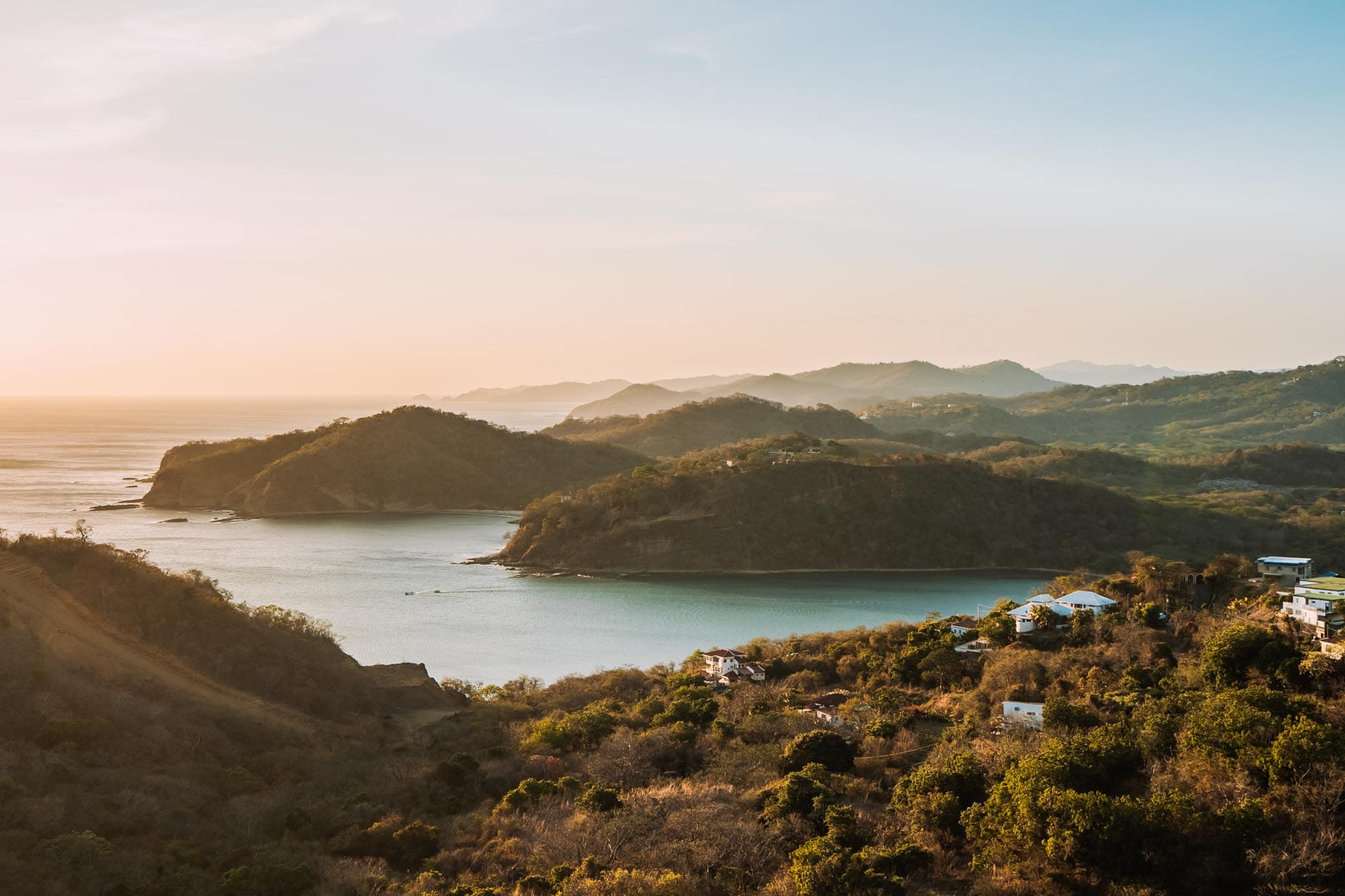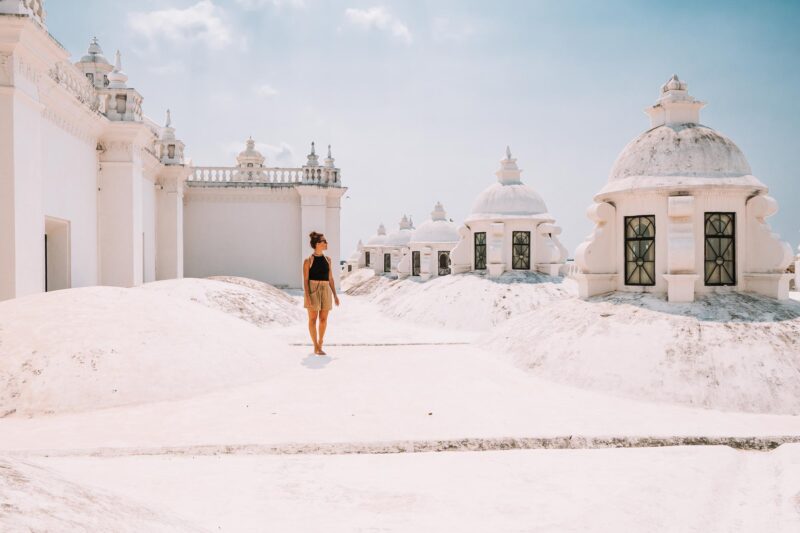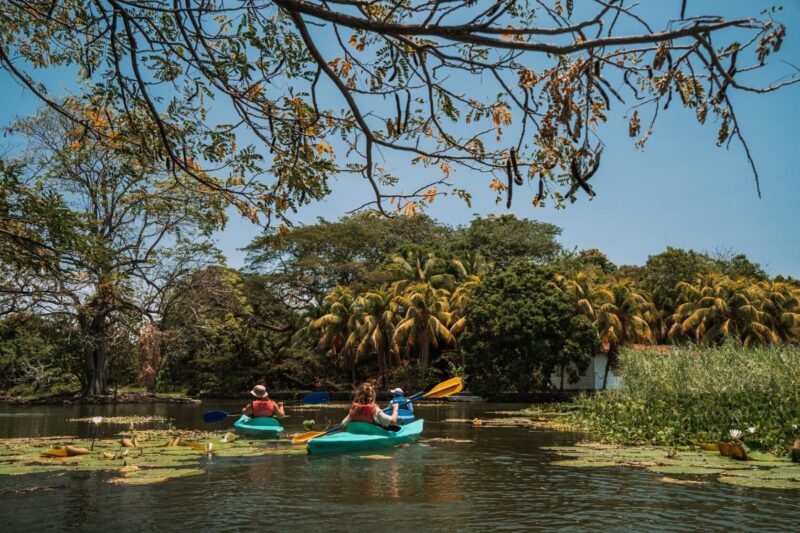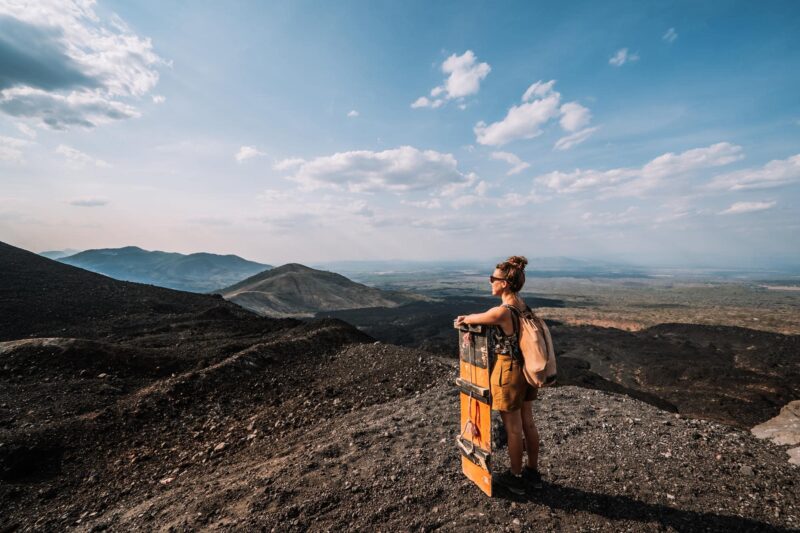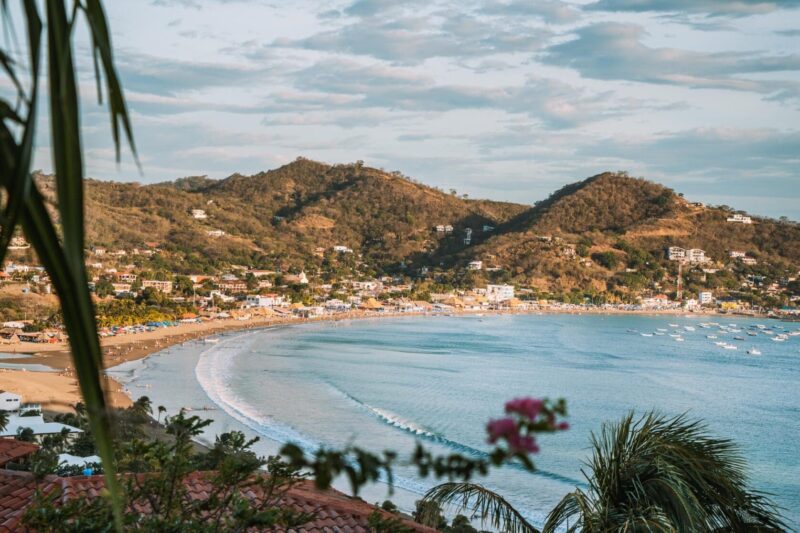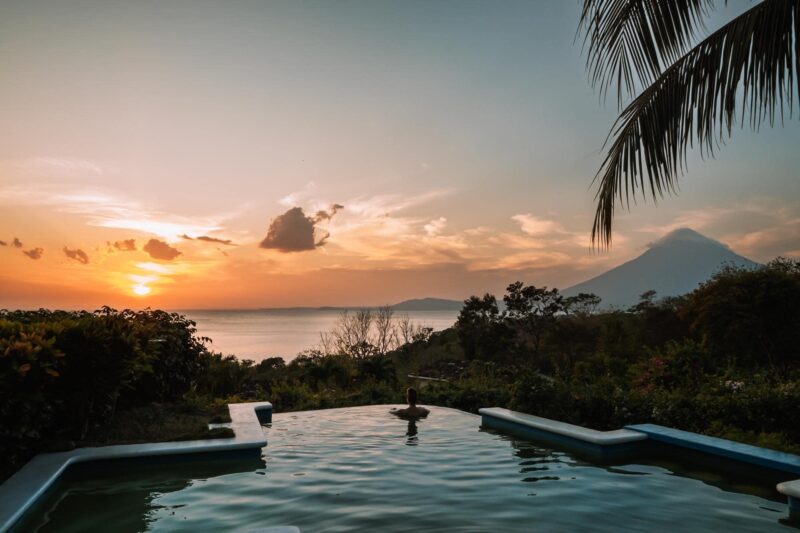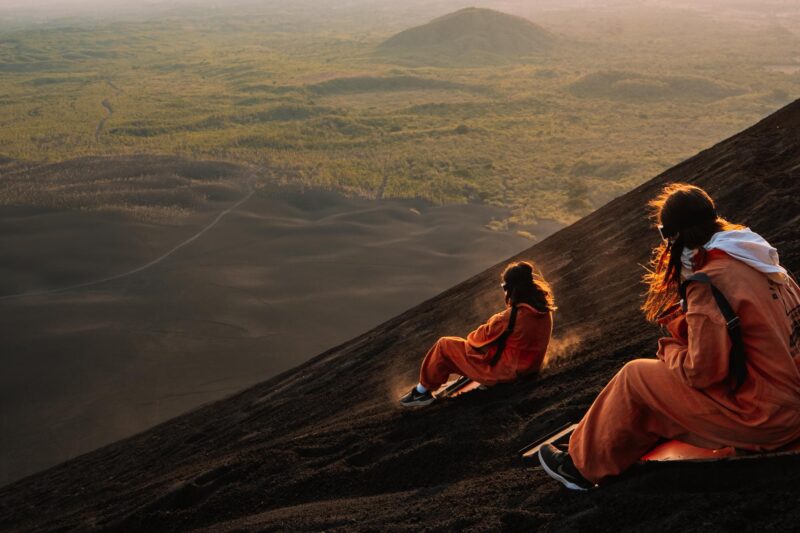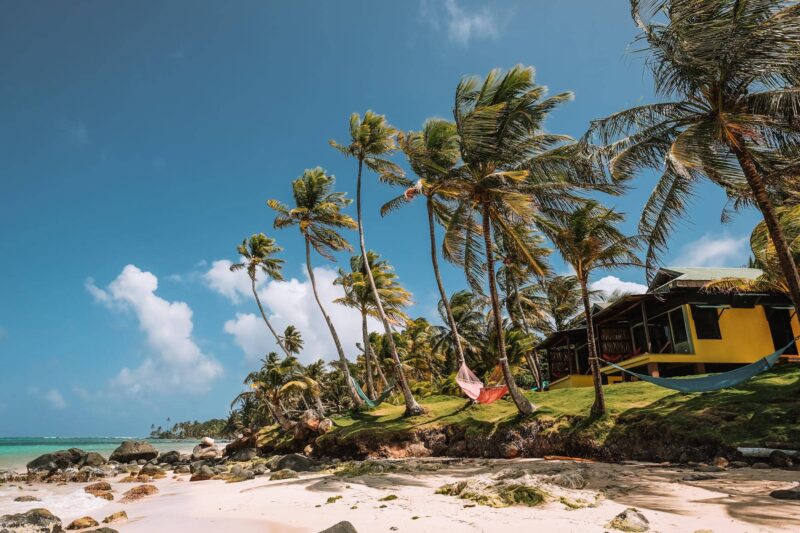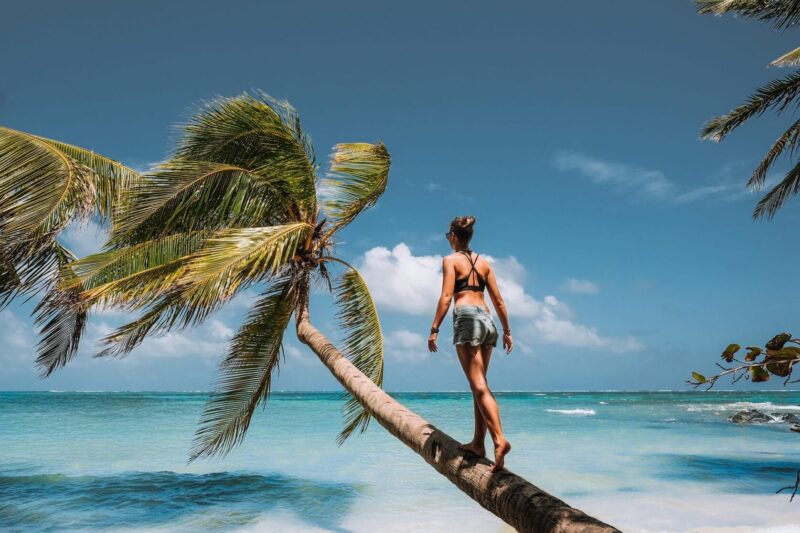Traveling in Nicaragua is a treat for adventurers. In this second-largest country in Central America, you can find 19 volcanoes, and life there is still very authentic. Nicaragua can’t be compared to any other country in Central America. During a trip through Nicaragua, you’ll visit beautiful colonial cities, enjoy idyllic islands, and engage in exciting outdoor activities. Before you travel to Nicaragua, read these 9 practical tips and insights to ensure you’re well-prepared for your journey.
#1 The Best Time to Visit Nicaragua
Nicaragua has two seasons: the rainy season and the dry season. The rainy season runs from May to October, with October being particularly wet. During the rainy season, there can be heavy rainfall, but it’s often in the form of short, intense showers, with the sun peeking through. One advantage of the rainy season is that the landscape is much greener. If you want the best chance of clear skies during your trip, opt for the dry season from November to April. However, it’s best to avoid April, which is the hottest month of the year.

#2 Nicaragua is Still Very Authentic
In Nicaragua, it sometimes feels like time has stood still. This results in beautiful scenery and an authentic travel experience. In rural areas, you’ll see men riding horses with cowboy hats and boots, and on local markets, you’ll find women wearing colorful traditional clothing. The country is less developed than many neighboring countries and can greatly benefit from tourism income. You are more than welcome in hospitable and authentic Nicaragua.
#3 Traveling in Nicaragua is Budget-Friendly
In addition to being very authentic, Nicaragua is also a budget-friendly destination. It’s the cheapest country in Central America, making it a popular choice for backpackers. Most hostels and hotels are incredibly affordable, especially when compared to other Central American countries. A bed in a dormitory typically costs around $10 per night, and a double room ranges from $20 to $30. Food in Nicaragua doesn’t have to break the bank either. Eating at street food stalls or local restaurants will set you back an average of $5 for a meal. Read more about the costs in Nicaragua.
However, the flip side of this coin is that much of the local population is very poor. Especially when crossing the border from Costa Rica to Nicaragua, you’ll notice the difference. The country is more outdated, polluted, and there are many more homeless people and beggars on the streets.
#4 How Money and Payments Work
You can use both the US dollar and the Nicaraguan córdoba for payment in Nicaragua. Although both currencies are often listed on the bill, it’s best to pay with córdobas. You can easily withdraw money from ATMs. Some ATMs only allow you to withdraw money with a credit card, but at Banpro banks, you can also withdraw cash with your Maestro debit card.
When you ask for the bill at a restaurant, you’ll often see an optional 10% tip already included. If you don’t mention it, you’ll automatically pay it. If you weren’t satisfied with the food or have another reason not to pay the tip, you should let them know, and they will remove it.
Tip: When asking for a price or negotiating, it’s better to use the word “peso” instead of “córdoba.” This old term is still commonly used by the local population.
#5 Tips for Transportation in Nicaragua
The distances between popular destinations in Nicaragua are not very large, making it convenient to travel by local buses. These so-called chicken buses are old American school buses that have been customized with various colors, horns, and decorations. They operate throughout the country and are very affordable. A ride of a few hours will cost you just a few dollars, making bus travel in Nicaragua extremely budget-friendly. While not all bus stops are well-defined, you can quickly figure out where to catch the bus by asking around. Keep in mind that there are often fewer buses running on Sundays. You can find detailed information on how to travel between destinations in our articles on Nicaragua destinations.
Little Corn Island is the only destination that is a bit more remote. It’s a beautiful tropical island off the Caribbean coast of Nicaragua. To get there, you’ll have to cover some distance. You can find information on how to get there in our article with tips for Little Corn Island.
Tip: Keep in mind that buses can sometimes get very crowded, and your backpack may occasionally be tied to the roof of the bus. Therefore, put your valuable items in your daypack and keep it with you at all times.
#6 Traveling In and Out of Nicaragua by Land
When crossing the border into Nicaragua by land, you must pay an entrance fee of $15. This must be in cash and in exact change. When leaving Nicaragua, you’ll pay a $3 exit fee. If you’re traveling from Costa Rica, you’ll also pay an exit fee of $9 on the Costa Rican side. There are no ATMs at the border crossings, so make sure you have enough dollars with you. Also, keep all the documents you receive during immigration. Sometimes they may ask for them again when you exit Nicaragua.
Tip: Nicaragua has strict customs policies. For example, it’s not allowed to bring binoculars or drones. They will check your luggage, and if they find any of these items, they will confiscate them.
#7 Safety in Nicaragua
Nicaragua is safe for travel. Travel to Nicaragua was discouraged in 2018 due to political tensions and violent protests. Fortunately, this is now over, and a positive travel advisory is in place. The local population of Nicaragua is very friendly, and it’s easy and safe to travel even as a solo female traveler. Of course, things can happen anywhere and anytime, but this applies to all travel destinations.
#8 Nicaragua Pairs Well with Costa Rica or Guatemala
Many travelers choose to combine Nicaragua with either Costa Rica or Guatemala. By combining these countries, you can create a diverse journey filled with various cultures, natural wonders, and activities. Each of these nations offers a unique experience, constantly stimulating your senses. You can easily cross the border by bus. The bus journey to or from Guatemala takes a bit longer as you have to traverse all of Honduras. In total, the bus ride lasts about 18 hours. If you’re traveling from Costa Rica to Nicaragua, it will take considerably less time.


#9 The Ultimate Nicaragua Travel Itinerary
Having visited Nicaragua multiple times, we’ve leveraged our knowledge and experience to create the ultimate travel itinerary for Nicaragua. This itinerary will take you to colorful colonial cities, lakes, and towering volcanoes, ensuring you get the most out of your trip to Nicaragua! You can complete this itinerary in just under two weeks, making it ideal for those looking to combine it with a visit to Costa Rica or Guatemala.
